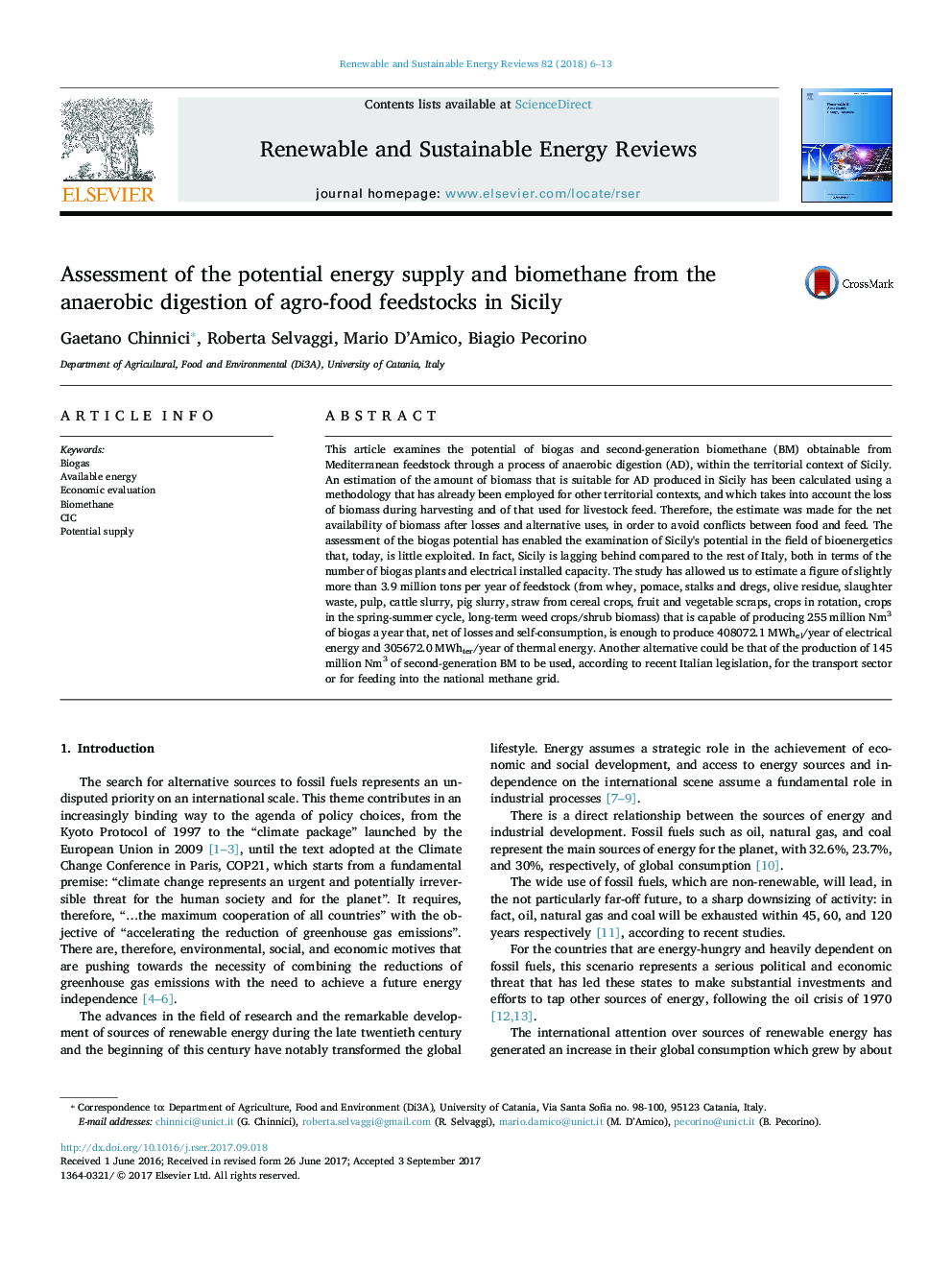| Article ID | Journal | Published Year | Pages | File Type |
|---|---|---|---|---|
| 5481848 | Renewable and Sustainable Energy Reviews | 2018 | 8 Pages |
Abstract
This article examines the potential of biogas and second-generation biomethane (BM) obtainable from Mediterranean feedstock through a process of anaerobic digestion (AD), within the territorial context of Sicily. An estimation of the amount of biomass that is suitable for AD produced in Sicily has been calculated using a methodology that has already been employed for other territorial contexts, and which takes into account the loss of biomass during harvesting and of that used for livestock feed. Therefore, the estimate was made for the net availability of biomass after losses and alternative uses, in order to avoid conflicts between food and feed. The assessment of the biogas potential has enabled the examination of Sicily's potential in the field of bioenergetics that, today, is little exploited. In fact, Sicily is lagging behind compared to the rest of Italy, both in terms of the number of biogas plants and electrical installed capacity. The study has allowed us to estimate a figure of slightly more than 3.9 million tons per year of feedstock (from whey, pomace, stalks and dregs, olive residue, slaughter waste, pulp, cattle slurry, pig slurry, straw from cereal crops, fruit and vegetable scraps, crops in rotation, crops in the spring-summer cycle, long-term weed crops/shrub biomass) that is capable of producing 255 million Nm3 of biogas a year that, net of losses and self-consumption, is enough to produce 408072.1Â MWhel/year of electrical energy and 305672.0Â MWhter/year of thermal energy. Another alternative could be that of the production of 145 million Nm3 of second-generation BM to be used, according to recent Italian legislation, for the transport sector or for feeding into the national methane grid.
Related Topics
Physical Sciences and Engineering
Energy
Renewable Energy, Sustainability and the Environment
Authors
Gaetano Chinnici, Roberta Selvaggi, Mario D'Amico, Biagio Pecorino,
